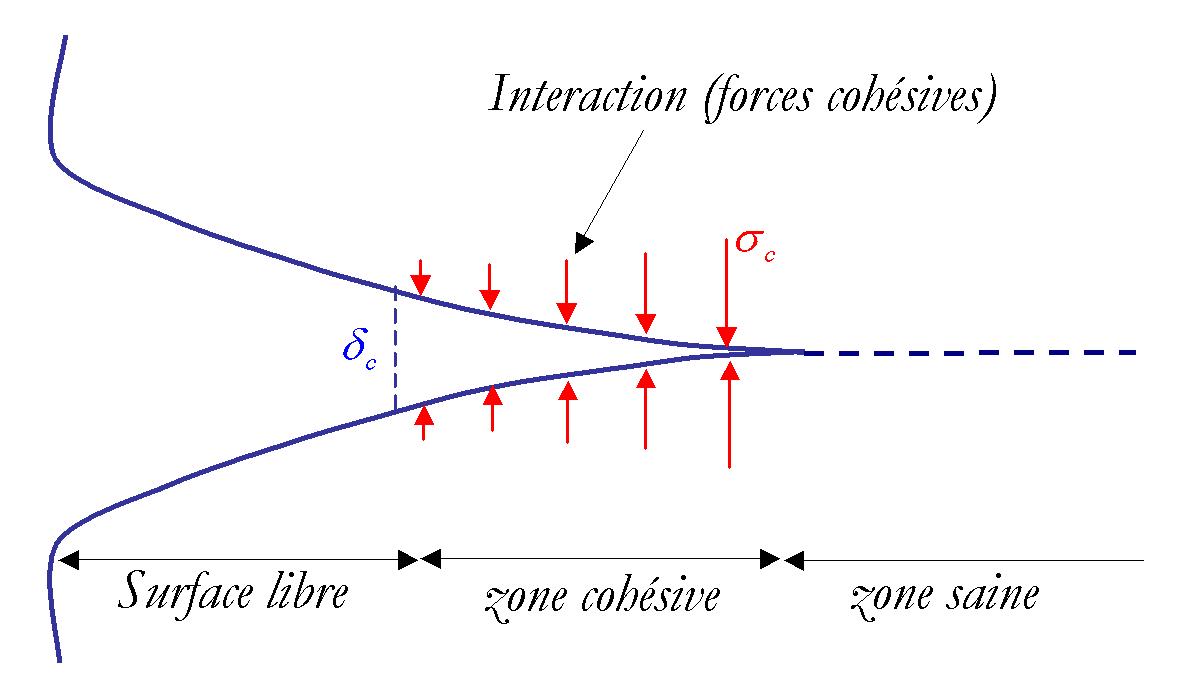1. Overview of cohesive laws#
In fragile rupture, to overcome the problem of infinite stresses at the bottom of a crack, it is possible to introduce cohesion forces that impose a stress initiation criterion [2]. The forces are exerted between the particles on both sides of the plane of separation of the crack (see Figure). Historically, one of the first to propose this type of approach was Barenblatt [3] in the early sixties. Based on this idea, numerous models have emerged in the literature under the name: « Cohesive zone models » or CZM in English. For a more complete bibliography we can refer to [4].

Figure 1.1: Diagram of a crack
It is considered that the opening of the crack costs energy in proportion to its length. It’s called surface energy, which we note \(\Psi\). The displacement field at equilibrium \(u\) is obtained by minimizing the sum of the elastic energy \(\Phi\) of the surface energy, and the work of external forces \({W}^{\mathrm{ext.}}\):
\(\underset{u}{\text{min}}(\Phi +\Psi +{W}^{\mathrm{ext}})\)
The jump displacement vector in element \(\mathrm{\Delta }\) is a linear function of nodal displacements. The force [1] _
Cohesion that is exerted on the lips of the crack is noted

, it is defined by the derivative of the surface free energy density with respect to the displacement jump vector.
A relationship between \(\mathrm{\sigma }\) and the movement jump \(\mathrm{\Delta }\) is called cohesive law.
In the interface-related coordinate system, \(N\) designates the direction normal to the interface and \(T=({T}_{\mathrm{1,}}{T}_{2})\) designates the coordinate subsystem in the tangential plane of the interface.